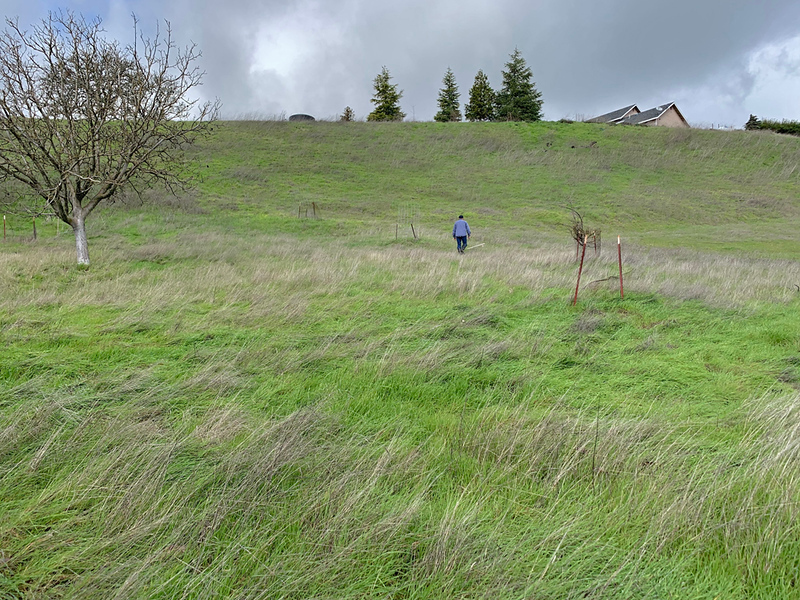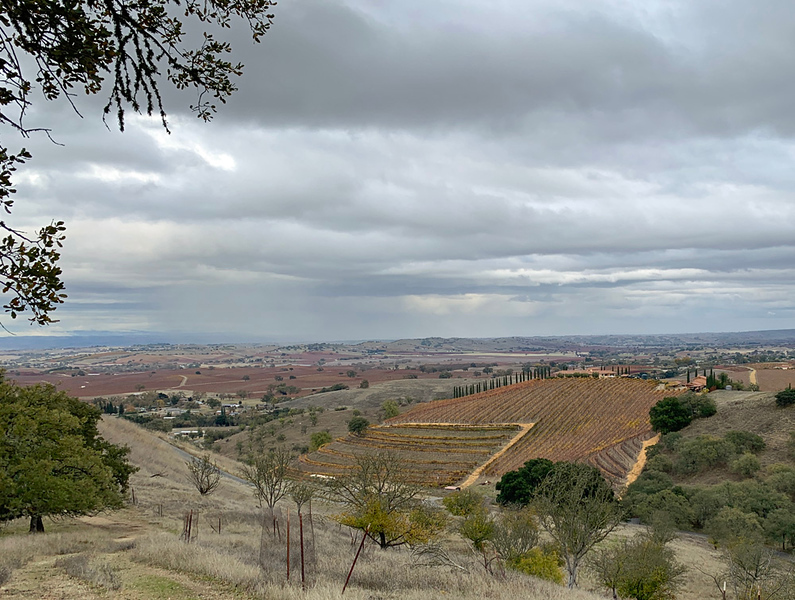Fitter30
Well-Known Member
Floats control the pump. Pressure switch is used for a high pressure/dead head safely switch if motorized valves don't open and pump turns on.
There is a yard hydrant, so the pressure switch is needed for more than a safety. If the yard hydrant were connected upstream of a check valve feeding the upper tank, then then the pressure switch may not be needed.Floats control the pump. Pressure switch is used for a high pressure/dead head safely switch if motorized valves don't open and pump turns on.
If the water enters each cistern above each cistern's highest water level (preferred), the upper tank will not drain-back to the lower tank.
Assuming the motorized ball valve actuators will be spring-loaded to close when there is no power, because the ball valves are slow closing, there is potential for the water in the feedline to the higher elevation tank to drain back into the lower tank during an initial loss of power.
This is also likely to occur if both motorized ball valves are open at the same time as the flow into the lower cistern will probably consume all of the flow from the pump so most of the water within the supply line to the upper tank will drain back into the lower tank.
Because you are planning to utilize a CSV, even if the well pump is activated by the cistern float switches, the system pressure will need to be higher regardless.
For a 40/60 PSI system, a CSV will be typically calibrated to regulate flow at about 50 PSI+-. Because the CSV will continually sense ~60 PSI backpressure from the supply line running up to the 140' cistern when MBV#1 is open, then the CSV will not open to regulate the flow rate so it will only allow 1 GPM to pass through.
To increase the flow rate through the CSV, the system pressure settings will need to be higher than the backpressure. A 65/85 pressure setting will permit the CSV to be calibrated for 75 psi. The CSV will then be fully closed (1 GPM flow) only when the 'downstream' pressure is 75 psi or above.
Those are about check valves not at the submersible pump and before the pressure tank.
People have spoken well of Simmons and Flomatic check valves. https://terrylove.com/forums/index.php?threads/check-valve-ruptured.66622/
That is one concern I've had. Having the pump turn on with both ball valves closed. I'm pretty sure that is not good for the pump.Floats control the pump. Pressure switch is used for a high pressure/dead head safely switch if motorized valves don't open and pump turns on.
That would sort of work, giving about 115 gallons of supply with constantly reducing pressure. Since as you reminded me, the fill ports are above the water level.There is a yard hydrant, so the pressure switch is needed for more than a safety. If the yard hydrant were connected upstream of a check valve feeding the upper tank, then then the pressure switch may not be needed.
A 120? psi pressure relief could be useful. Standard cheap water heater temperature and pressure relief valves are 150 psi.That is one concern I've had. Having the pump turn on with both ball valves closed. I'm pretty sure that is not good for the pump.
A 120? psi pressure relief could be useful. Standard cheap water heater temperature and pressure relief valves are 150 psi.
Will your pump be set 400 to 600 ft down?
Yes. I don't know what the ideal pressure would be. While it is not common, I would consider a 200 to 300 psi pressure gauge before the CSV.550 feet actually. Would the pressure relief valve be used as a blow-off in case the pump dead heads against two closed ball valves? To help save the pump?
Even as your intention for using a CSV is to eliminate pump cycling only while the yard hydrant is utilized, a CSV regulates the flow rate directly from the well pump so all water including cistern refill will flow through the CSV.
Because the system pressure will need to be raised, as previously suggested, the pump can then be fully controlled by the pressure switch, thereby eliminating the need to run wiring from the float switches to the pump controller.
Now this is interesting. The type of mechanical float valve you mention was brought up in an earlier post (perhaps by you?). Comes from Australia. I read up on it. Sort of like a toilet fill valve. No power needed. Too bad I already purchased the ball valves. Also, my neighbor's system is already up and running. And he has the wires leading to and from the float switch. So there is not too much to be gained on his end.Alternately, the flow into each cistern could be controlled by a mechanical float valve within each cistern, thereby eliminating the necessity of motorized ball valves and power at each cistern, although power will continue to be needed if you wish to incorporate water level alarms.
Yes. I don't know what the ideal pressure would be. While it is not common, I would consider a 200 to 300 psi pressure gauge before the CSV.
Is that a 10 gpm pump or a 7 gpm pump? Is that schedule 120 PVC pipe down to the pump?
Consider a flow inducer sleeve for the pump to enhance cooling, and some other possible advantages.
Linked below is the specifications page for the adjustable CSV model. It specifies the adjustment range to be 15-150 psi.I hope that the CSV can be adjusted to work at these higher pressures.
Ball valves remain useful to isolate each cistern from the pump during cistern maintenance such as allowing the water level to drop in each cistern prior to cleaning.Too bad I already purchased the ball valves.
Ball valves remain useful to isolate each cistern from the pump during cistern maintenance such as allowing the water level to drop in each cistern prior to cleaning.
Because the ball valves utilized in this fashion will normally remain fully open, there will be little purpose or benefit in motorizing them.
You haven't explained how water is delivered from each cistern to each home. Is the difference in elevation between each cistern due to hilly property, or is each cistern elevated above ground so water flow to each home is reliant on gravity?


If that is to the bottom of the tank, that is getting to where you could consider gravity alone. Avoid the maintenance of a pressure pump.Ours is about 80 ft lower.
Yes that is to the bottom of the tank. The tank is 16 ft tall I think. We've run some garden hose down from the tank to the house pad and the pressure is pretty decent. Sprays out of the house real nice and will power an oscillating sprinkler just fine. I calculate 35-40 psi or so. We put the tank up on the hill mainly for fire protection. To allow CalFire to use the hydrant without a pump.If that is to the bottom of the tank, that is getting to where you could consider gravity alone. Avoid the maintenance of a pressure pump.
Thanks.If you look at a pressure loss calculator, you can see what size pipe gives you low pressure drops at household use pressures. A house seldom used more than 10 gpm.
http://www.pressure-drop.com/Online-Calculator/
SIDR pipe is often good bang for the buck. Avoid steel pipe for household water. For PVC, you want to take into account thermal effects. https://www.charlottepipe.com/Documents/PL_Tech_Man/ExpansionandContraction.pdf For SIDR, you snake the path of the pipe, but you can't do that with PVC.
This is awkward, but...
It looks like you're using an ad blocker. We get it, but (1) terrylove.com can't live without ads, and (2) ad blockers can cause issues with videos and comments. If you'd like to support the site, please allow ads.
If any particular ad is your REASON for blocking ads, please let us know. We might be able to do something about it. Thanks.